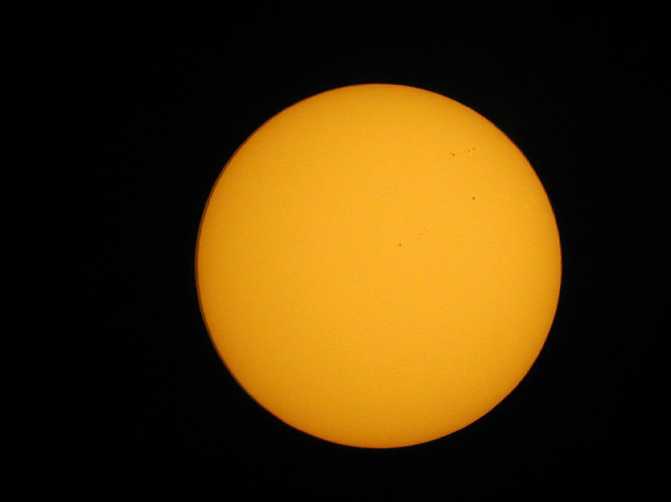Last updated: 22 March 2004
|
Last updated: 22 March 2004 |
Subject: FYI: first ideas on subject Date: 3/20/04, 20:44 From: Dan Prall (diverdanp@earthlink.net) I've just found what I think is the best way to shoot the 8 June Transit of Venus. Anything I send you will be a work in progress, but the time is so short, you might even want to create a new category: Time-sensitive data, with an expiration date. For tonight, here is the e-mail I sent to a friend I'll be meeting in Antalya, Turkey to see the transit and another guy in Australia. Attached is my sun shot from 5 hours ago.The entries may not be up to your usual high standards, but they would let people get the latest information to try. It would be understood that these entries might be deleted at some time after the expiry date of the event they refer to. On the other hand, some might not. There is another Venus transit in 2012. After that, no more until another 120 years or so. Major processing for the attached jpg was done with the free Registax [Google it] program with detailed instructions for use in the April 2004 Sky & Tel by the author. Minor sharpening with Photoshop7, or most prior versions. The transit is still 2.5 months away, so there's still time to buy gear and practice with it. If you like I'll spend a day or two focussing an article based on this for you. It's rude and it's crude, but it may be helpful in the short term. I'm in Dallas, where we're right on the edge of being able to see the transit. In the NE US or western Australia, it can be seen near dawn or dusk. Europe, most of Asia, and most of northern Africa can see it all. Let me know if you think this is useful, and I'll rewrite the thing in a more suitable fashion for your site. Of course much of it is gear-specific, but it's intended more to inspire ideas than to prescribe one brand; to propagate ideas. Dan Prall 20 March 2004 ************** S---- and W----, Here's the latest from Sat. 4-5 PM here, best 14 of 25 shots over 1m34s from first to last keeper, with the Oly run thru Registax and sharpened a hair with Photoshop7. Again, Oly C-3000Z at SHQ. Here's something nice: I couldn't get the remote to work, so I had to press the shutter for each shot. Digital delay worked in my favor; it gave everything a chance to steady down before the actual exposure! The best shots came from normal program mode. Update for W----: I've started experimenting with my Olympus C3xxxZ series 3Mpxl cameras as an alternative to the ToUcam for the transit with sunspot practice. Same ETX90RA scope, with an Oly C3000Z with adapters for "eyepiece projection" with a Meade 40mm Plossl [rubber guard removed]. At 'SHQ' quality that would normally give a 1.5-1.6Mb JPG, these are coming out at about 3.5 times less. This means that a $20US 128Mb card that would hold an estimated 70 shots, would hold about 250+ shots! Assume the transit lasts 8 hours in Antalya, and that works out to about one shot every 2 minutes fitting on one card. Imagine 250 shots lined up across the sun at 1/4 of the way in from the edge; they'd overlap a lot. So shoot every 5 minutes, allowing time to re-center the sun and relax the batteries by turning off for a few minutes between shots except near ingress and egress, and I have an external rechargeable $40US NiCad pack that lasts several times as long as the internal 4AA's. And at the end, it all fits nicely on a pocket 210Mb CD-R with room to spare. Compare that to the ToUcam 640x480 AVI's at 100 to 250Mb each that require a laptop active for each capture of less than one minute each. I should have it all together by time for the transit. 
Return to the top of this page.
Go back to the Astrophotography Page.
Go back to my ETX Home Page.